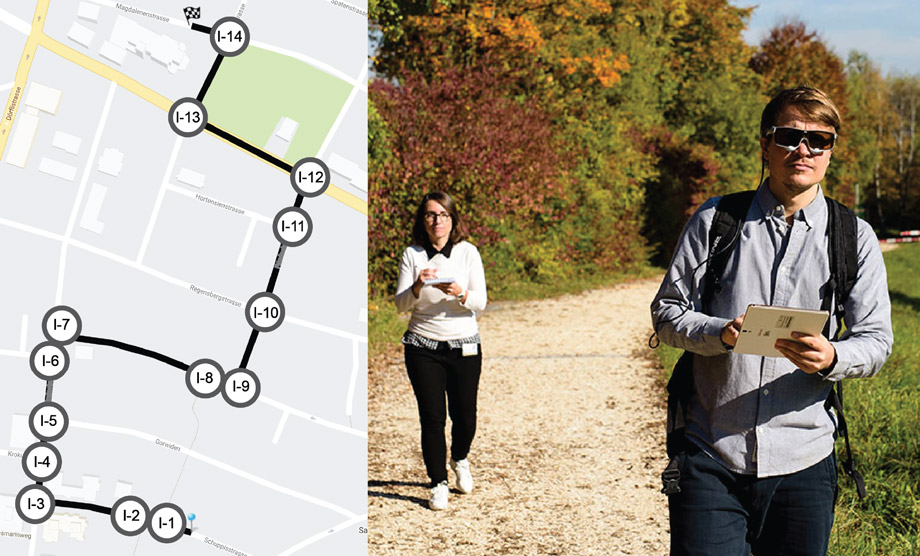Navigation auf uzh.ch
Navigation auf uzh.ch
Navigation systems are ubiquitous tools, but they make us pay less attention to environment properties and thus we acquire less spatial knowledge. However, intelligent navigation systems can influence human navigation behaviour.

Envision that you exit a bus on your way to your friend's house, but you have no idea where the house is. Luckily, you have the address on your phone, which is equipped with a navigation system. As you arrive, you discover that your friend is not there and that the battery of your phone is empty. On top of all this, you realize that you have lost your keys somewhere along the way. Would you be able to recall your path to the bus stop to search for your lost keys?
Navigation systems assist us during navigation, but they also affect our navigation behavior. During assisted navigation, we may completely rely on the system and tend to focus either on it or on matters other than navigation. We thus do not attend to the environment surrounding us, which degrades our spatial knowledge acquisition. Such behavioral changes are mostly unintentional and not properly empirically investigated, particularly in real-world environments.
In this study, we examined how navigation system behavior (in terms of automating cognitive processes) changes our behavior in and attention to the environment. We will only be able to design intelligent systems with a deeper understanding of their effects on human navigation behavior. Perhaps then the task of finding the same way back might not be as difficult as it was for some participants in our study.
This paper received the Best Article Award 2019 of the journal Cognitive Research: Principles and Implications.
Brügger A, Richter KF, Fabrikant SI. How does navigation system behavior influence human behavior?. Cogn Res Princ Implic. 2019;4(1):5. Published 2019 Feb 13. doi:10.1186/s41235-019-0156-5
Pictures: CC BY 4.0